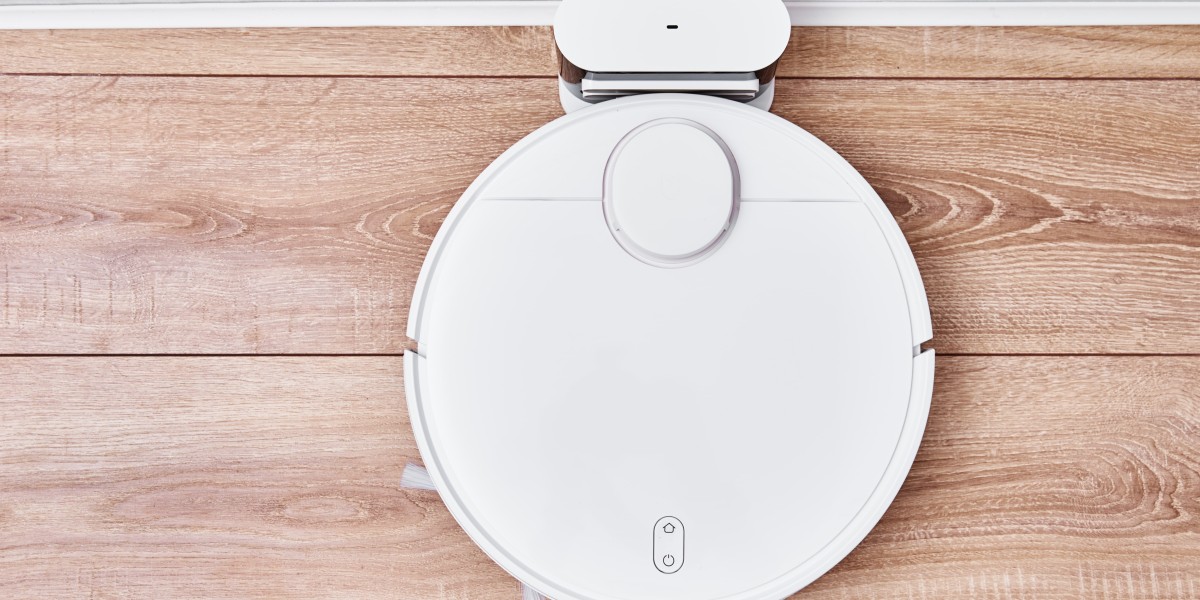 While robot vacuums are great in keeping your floors clean but they aren't able to substitute for a larger vacuum. Even the best robots can struggle to get deep into carpets or rugs and often get caught in socks and cords.
While robot vacuums are great in keeping your floors clean but they aren't able to substitute for a larger vacuum. Even the best robots can struggle to get deep into carpets or rugs and often get caught in socks and cords.Your robot will last longer if you perform regular maintenance. This includes replacing filters, cutting hairs that have become tangled off brushes, and emptying the dust bin.
Battery Life
Most robot vacuums can handle a few cleaning sessions before needing a charge. The runner-up in our overall picks, the Ecovacs Deebot Q30S Combo comes with a battery capable of lasting up to 180 minutes (3,230 square feet) of cleaning time on a single charge. This amount of runtime will suffice for the majority of small homes with a mixture of hard flooring and carpets with low pile or larger homes with rooms that are roughly the same size.
A longer battery lifespan also means that the robot will spend more time cleaning, and less time charging on its dock. You should select a model that has an auto-emptying bin. These models are more efficient at picking up debris and returning to docks to recharge. It is important to clean or replace filters and clean the sensors and cameras on a regular schedule so they can be seen clearly.
Smart mapping technology is an important feature to look for because it allows you to program your robot to only clean specific rooms or areas that it's likely to bump into furniture or other obstacles. It's also beneficial for ensuring your robot is able to get under and around sofas, beds and other furniture that is tall. Some cheap robovacs offer boundary strips you can place on the floor to block off certain areas, while others make use of sensors and cameras to achieve this goal.
Even the best Robot Vacuum cleaner top 10 vacs cannot replace a traditional vacuum when it comes to heavy-duty, large-pile dirt and debris. It's wise to keep a traditional power vac in reserve to handle these chores and to schedule robot vacuums regularly for light cleaning throughout the week.
Navigation
A robot must be able to navigate your home without getting stuck or crashing into objects like metal screws or loose pet hair or sand. In our tests, we employ a tracking device to track the robot as it moves through a multi-room lab and maps out its surroundings. We also check the extent to which it can avoid obstacles, including furniture legs, power cords, and pet waste.
The best robots are able to map out different floors and recognize landmarks, like windows and doors. The most advanced robots, such as the Roborock S8 Pro Ultra have a dual sensor navigation system, that uses an LIDAR to create a floor plan and a structured-light camera at the front to spot objects in real-time. The S8 is able to avoid obstacles such as power cords and furniture legs. It also has the capability to store up to four floor maps.
Cheaper models don't come with this kind of detection and rely on bump sensors which aren't as accurate. In my tests they were able to detect dog poop through cords, as well as a pair shoes placed in the middle. The Dreametech D10+ is the best value choice. It has excellent carpet and hard floor pickup, excellent hair and tangle pickup and an auto empty score.
A large onboard dustbin, which doesn't have to be empty manually, is also a feature that's important. For models that sweep the floor, this tank will provide enough water for several weeks of cleaning. The Karcher RCV 5 has this and a big enough footprint that it can go under furniture however, it's not so huge that it doesn't fit into the nook between your toilet and bathtub.
Apps
Robot vacuums are like their upright counterparts and require an array of technologies to keep them up to date. There are many options in a market that is maturing. Even the best models require interaction from their users particularly when it comes to schedule cleanings, create an outline of your home, and set up virtual barriers.
Consider a model with its own app that can recognize the layout of your house and save the settings for future use. This will allow the robot vacuum to continue where it began in subsequent runs, rather than having the mapping process restarted each time.
It's also worth keeping an eye out for a model that has spot or zone cleaning modes. You can instruct the robot vacuum cleaner to focus on a specific area, for example, under the table after a huge family meal. You can choose to do this by using the app or voice commands.
The ability to avoid objects is another option that is available on many models. It allows the robot, when it comes across objects in its path such as a box shoes or a crate containing dog toys, to guide itself around. This will prevent it from crashing into objects that could harm its sensors or cause jams.
Some of the most expensive models we tested come with this feature. However, they tend to rely on bump sensors to accomplish this, and they weren't always able to stay clear of things in my test homes.
Pet Hair
When it comes to removing pet hair, choose the right model designed to handle this type of debris. The most effective models come with high suction power and a brush that is free of the tangling and an emptying mechanism that can automatically dump hair into the trash bin when necessary. Some can also detect dirt levels and adjust the intensity of cleaning accordingly. They can also detect objects that aren't part of your home's flooring like furniture and toys, food bowls cords, and much more.
Some robot vacuums come with additional features that are pet-friendly. These include a water dispenser that is used to clean floors, and a HEPA filtering system that helps to reduce allergens, such as pet dander. They could also feature an operation that is quieter to cut down on the amount of noise generated during cleaning sessions.
Robot vacuums that have maps are a great option for pet owners, since they're designed to evaluate your home and devise plans of attack based on the layout and the obstacles in every room. Shark Matrix Plus is a two-in-one robot vacuum that can map a room, navigate around furniture, and other obstacles with the help of accelerometers and Gyroscope smart sensors.
Other models that are more advanced let you define no-go zones that are areas that the robot is supposed to avoid, such as items that are fragile or pet feeding spots--by adjusting settings through an app. This feature is especially useful for a busy household because it allows you to schedule cleaning sessions and make adjustments without having to be in the same room with the vacuum. Another great feature is spot cleaning, which lets you control the vacuum to clean a particular area that is dirty or full of pet hair.
Dust Bin
If you don't need something small, consider a robot with a big bin or even a self-emptying bin. We recommend picking a model that has a large bin or a bin that self-empties. The one will let you keep up with emptying your bin often enough to ensure its efficiency. The latter will save time and effort by automatically dropping the contents into an inner container every few cleanings.
Regardless of the size of your house the majority of robots are able to climb up and around furniture, and almost all can detect and navigate around household obstacles such as shoes, loose cords and dog poop. Find models with intelligent mapping capabilities, which allow them to "learn" the layout of your home and design more efficient routes, as well as ones that can sense and avoid objects that could hinder their routes (like shoelaces or strangling charging cables).
Some models also offer spot cleaning, which lets you to choose a particular area of your home for thorough cleaning. In our tests, we found that the best models can remove small particles like baking soda, sand, orzo, metal screws and pet hair, in addition to heavier debris such as oatmeal, orzo, and metal screws.
Depending on the brand, most robots can last for a long time and continue to perform well in the event that you maintain them with regular maintenance, like cleaning out hair that is tangled from brushes and dust bins, emptying them after every use and cleaning cameras and sensors whenever needed. The most efficient robots tend to be more modular and therefore easier and cheaper to repair or replace components such as batteries and wheels as they wear out.









